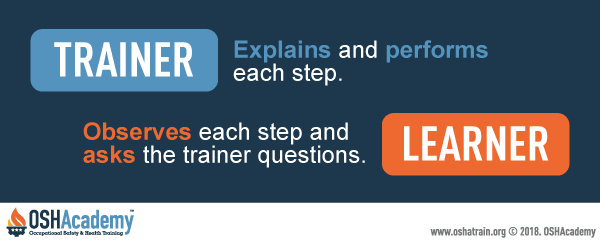On-The-Job Training Strategy
On-The-Job Training (OJT) is the training method most often used in the workplace, and it's popular for a good reason. OJT can be very effective because it tests both knowledge and skills during the training process. Let's take a look at the OJT steps.
Step 1. Introduction: State and discuss the learning objectives and answer any questions the employee may have. Discuss the acceptable standards of knowledge and performance. Tell the trainee what you're going to train. Emphasize the importance of the procedure to the success of the production/service goals. Encourage questions. Emphasize the natural and system consequences of their performance. The natural consequences describe the hurt or health that automatically results. The system consequences are those consequences the organization applies as a result of an employee's performance; discipline or positive recognition.
Step 2. Trainer tells and does: In this step the trainee becomes familiar with each work practice and why it is important. Review the initial conditions for the procedure. Demonstrate the process, carefully explaining each step as you go. Answer questions and continue to demonstrate and explain until the employee understands what to do, when and why to do it, and how to do it.



Step 3. Learner tells - Trainer does: This step is necessary when exposure to hazards inherent in the procedure could cause serious harm. It protects the trainee because the trainer performs the procedure. The trainee explains the procedure to the trainer, while the trainer does it. This gives the trainer an opportunity to discover whether there were any misunderstandings in the previous step. The trainee also responds to trainer questions.



Knowledge Check Choose the best answer for the question.
2-5. Why is on-the-job training (OJT) the most common and effective safety training strategy?
You forgot to answer the question!
